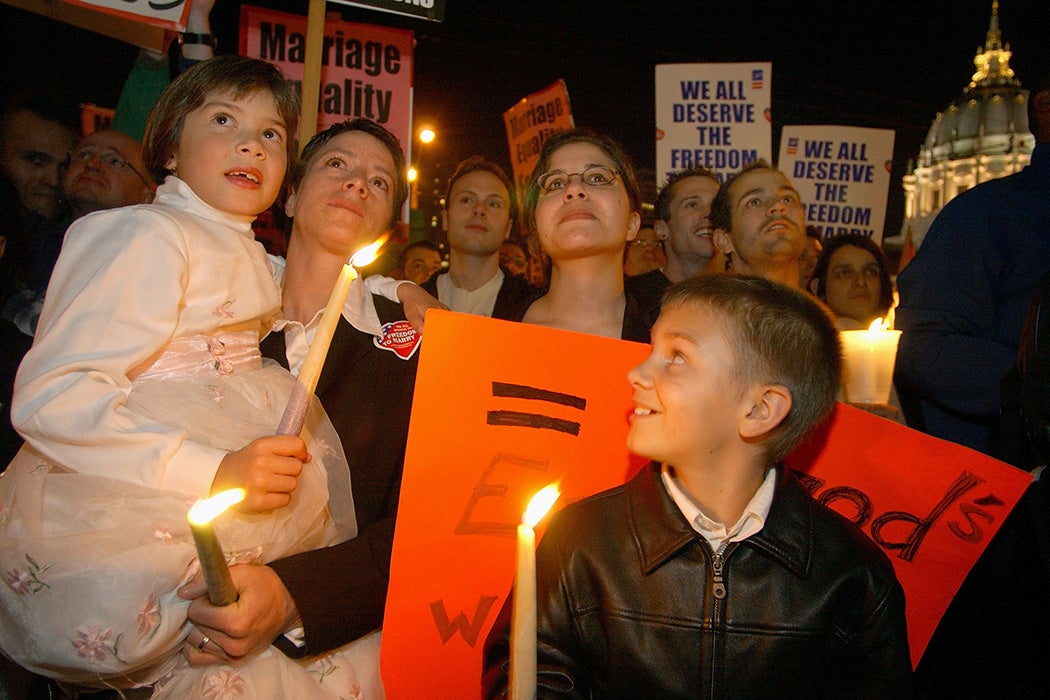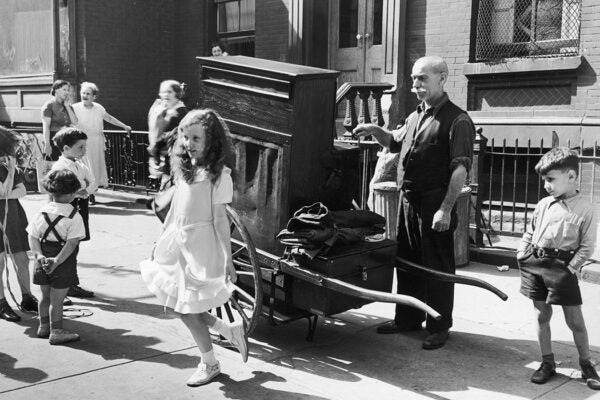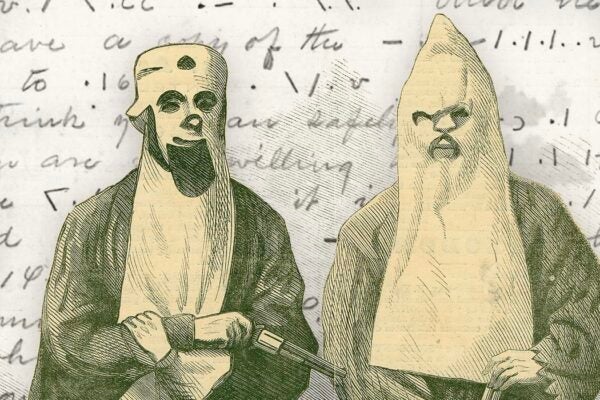Arguments against LGBTQ rights are often framed in terms of defending children. Writing soon after Senate Republicans’ failed 2004 attempt to pass the Federal Marriage Amendment (FMA), which would have banned same-sex marriage in the US, legal scholar Frederick Liu and political scientist Stephen Macedo looked at how proponents framed the issue in terms of kids.
Liu and Macedo write that the most internally coherent argument against gay marriage at the time came from legal scholars in the Catholicism-inspired “new natural law” school. They contended that marriage must be based on the biblical idea of “male and female” becoming “one flesh” and the intertwined idea that the essential purpose of marriage is “natural” reproduction.
But in the 2004 debate, the opponents of gay marriage shied away from identifying their position with religious doctrine or with criticisms of same-sex relationships. Liu and Macedo suggest this was largely a question of political expediency. The previous year, the US Supreme Court had struck down state laws against gay sex in Lawrence v. Texas without causing any public outcry. Republicans were also wary about giving credence to the new natural law scholars since their ideas included political non-starters like prohibiting divorce, contraception, and non-procreative heterosexual sex acts.
Instead, Senate Republicans argued that, as Utah Senator Orrin Hatch put it, “this amendment is not about discrimination… It is about safeguarding the best environment for children.”
This argument rested on the shaky ground of data showing more negative outcomes like dropping out of school or drug abuse among children raised outside heterosexual marriages—the vast majority of whom obviously did not have gay parents.
And Liu and Macedo write that, even taking this argument seriously, it has little to do with the FMA. At the time, every state except Florida permitted gay and lesbian individuals to adopt children, and the status of gay marriage was totally unrelated to the legality of gay couples raising kids.
Beyond suggesting that children suffered from having two parents of the same gender, the Republicans argued that, by its very existence, legal gay marriage would threaten opposite-sex marriages. Senator Sam Brownback of Kansas warned that marriage would come to be seen as “simply the expression of mutual affection between two consenting adults” rather than the normative context for creating a family.
Weekly Newsletter
Liu and Macedo note that this argument leaned on research by Stanley Kurtz of the conservative Hoover Institution, who presented the legalization of same-sex marriage in Scandinavian countries as leading to high levels of out-of-wedlock births and parental separations. In fact, though, even Kurtz’s research pointed to a number of factors in changing models of family in northern Europe, including working women, reduced religiosity, and the creation of alternatives to marriage for straight couples, such as civil unions.
Recognizing that rolling back such broad societal changes was beyond their power, and that public attitudes about gay people was turning against them, Republicans turned to rhetoric about protecting the children from gay marriage.







